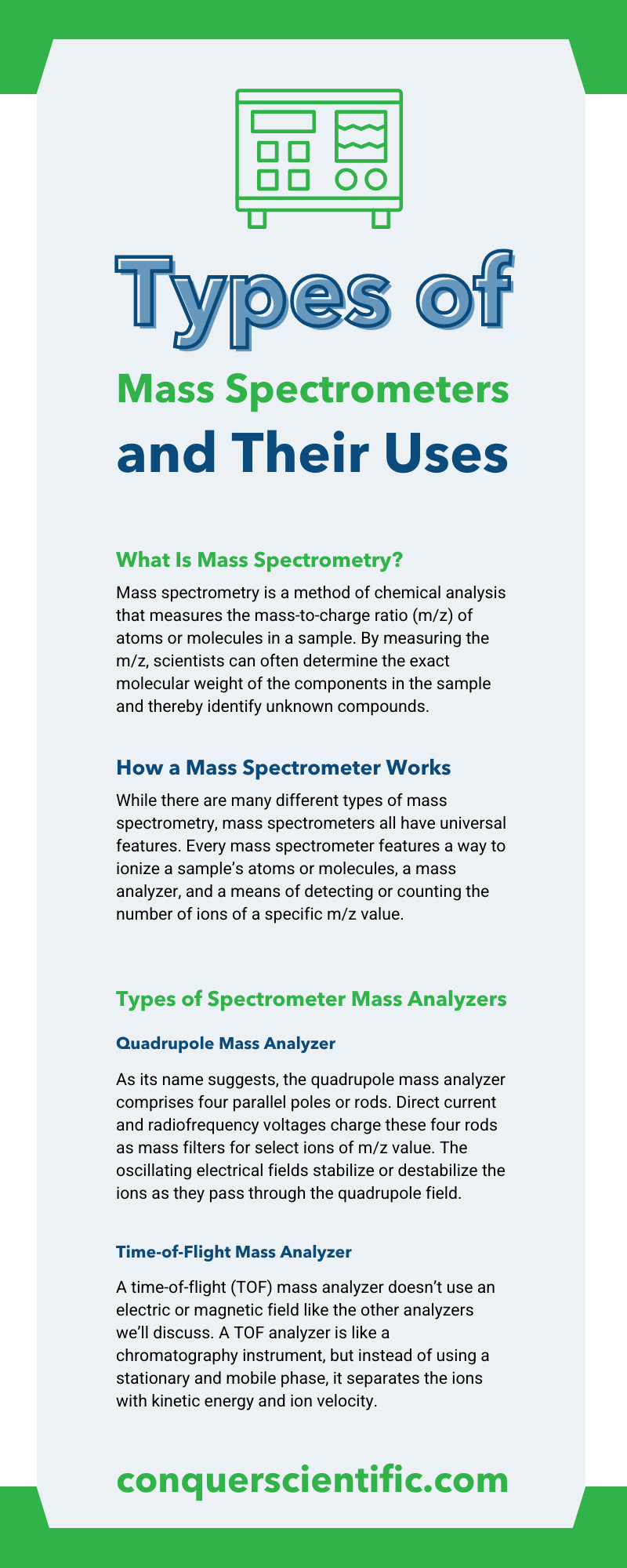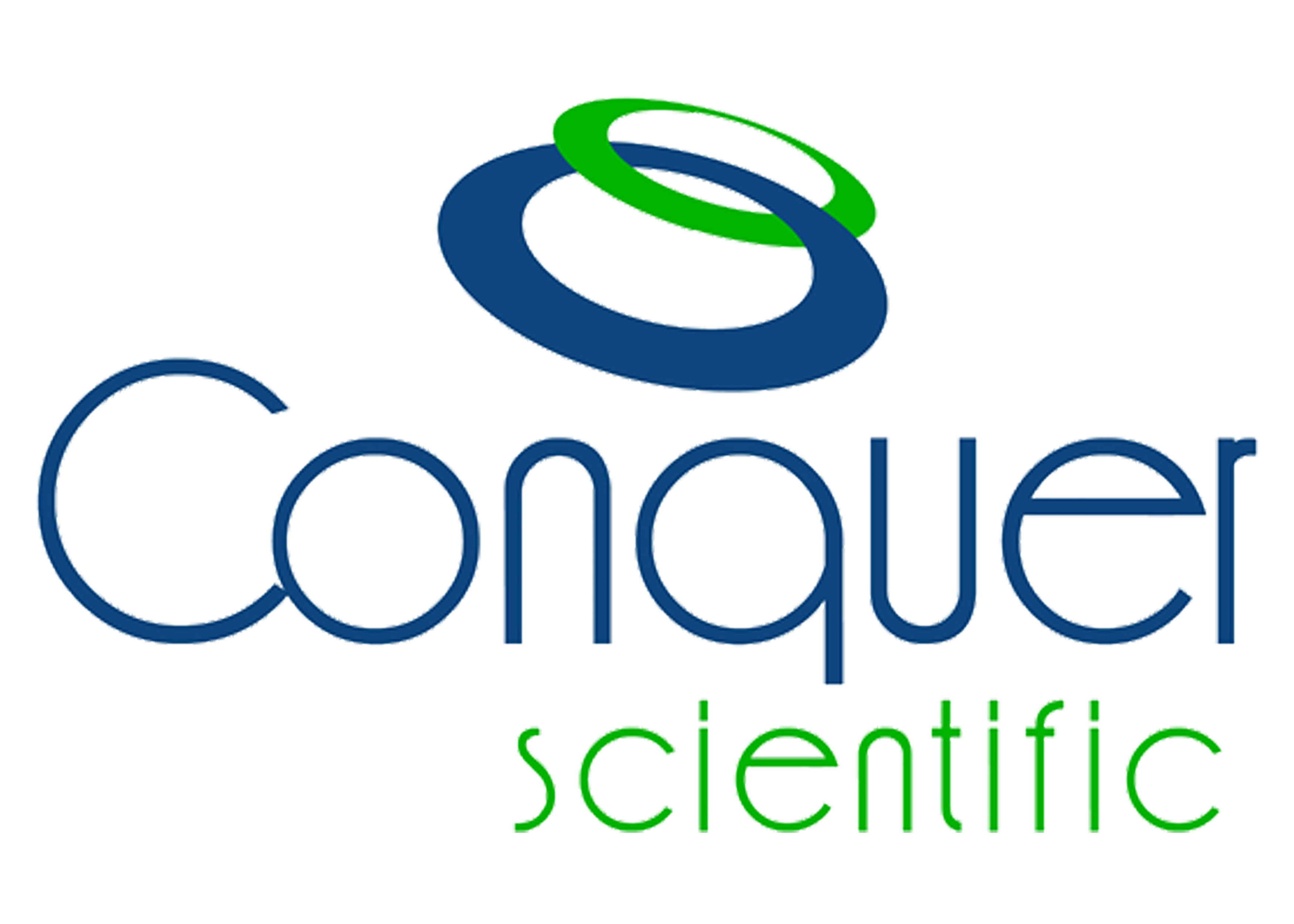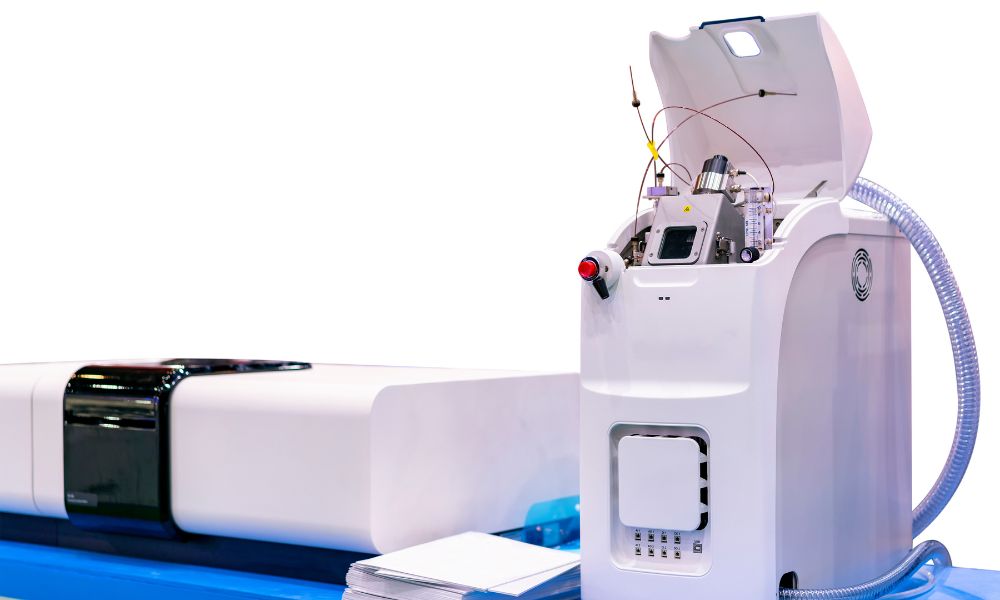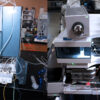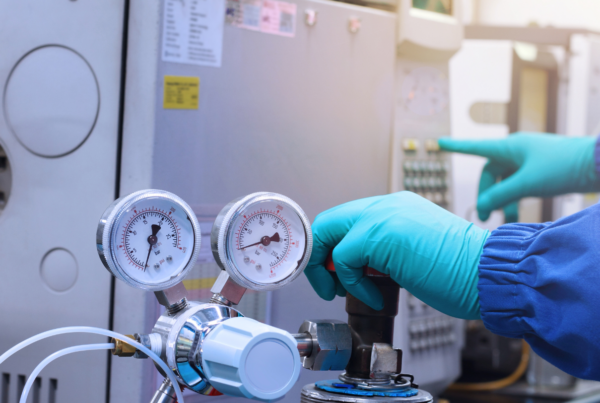Within the field of mass spectrometry are many different types of mass spectrometers for specific applications. Below, we’ll overview the basic principles of mass spectrometry, the types of mass spectrometers and analyzers, and some of their uses.
What Is Mass Spectrometry?
Mass spectrometry is a method of chemical analysis that measures the mass-to-charge ratio (m/z) of atoms or molecules in a sample. By measuring the m/z, scientists can often determine the exact molecular weight of the components in the sample and thereby identify unknown compounds.
Mass spectrometry is often paired with chromatography—gas (GC/MS) or liquid (LC/MS) chromatography. While chromatography separates the components of an unknown compound, mass spectrometry analyzes the components for accurate identification.
How a Mass Spectrometer Works
While there are many different types of mass spectrometry, mass spectrometers all have universal features. Every mass spectrometer features a way to ionize a sample’s atoms or molecules, a mass analyzer, and a means of detecting or counting the number of ions of a specific m/z value.
There’s much variety in the mass analyzer component, and there are many different ways to measure the m/z ratio of the ions in a sample, each with strengths and limitations. There are also many different forms of detectors to detect or count the number of ions of a specific m/z value, such as electron multipliers, Faraday cups, and microchannel plates.
Types of Spectrometer Mass Analyzers
Our breakdown of the various mass spectrometers will focus on the different types of mass analyzers. The mass analyzer separates the ionized masses based on the m/z and outputs them to the detector for detection and quantification. We’ll cover six types of mass analyzers below, each with unique strengths and limitations.
Quadrupole Mass Analyzer
As its name suggests, the quadrupole mass analyzer comprises four parallel poles or rods. Direct current and radiofrequency voltages charge these four rods as mass filters for select ions of m/z value. The oscillating electrical fields stabilize or destabilize the ions as they pass through the quadrupole field. The ions of the selected m/z value have a stable trajectory between the rods, while the others collide with the rods and are expelled from the analyzer. Quadrupole mass analyzers are the most widely-used spectrometers in clinical laboratories due to their versatility, affordability, and precision.
Time-of-Flight Mass Analyzer
A time-of-flight (TOF) mass analyzer doesn’t use an electric or magnetic field like the other analyzers we’ll discuss. A TOF analyzer is like a chromatography instrument, but instead of using a stationary and mobile phase, it separates the ions with kinetic energy and ion velocity.
Ions with the same charge also have the same kinetic energies, and the time of flight of the ion is directly proportional to the root of the ion’s m/z. Therefore, by determining the flight time of the ions in the analyzer, the TOF mass analyzer can determine and output the m/z for detection. Scientists commonly use TOF mass analyzers for substances with higher molecular masses, such as proteins.
Magnetic Sector Mass Analyzer
A magnetic sector mass analyzer is like a TOF mass analyzer, but it uses a magnetic field to accelerate the ions through a flight tube. There, the ions are separated based on their m/z. Ions of a specific m/z value with have a unique path radius through the flight tube due to the relationship between magnetism and m/z.
Certain ions passing through the magnetic field will be deflected and follow the same path, while the others will be expelled or follow their own path. This mass analyzer is excellent for precision, as it can be up to 10 times more precise than a quadrupole analyzer depending on the gases involved. For a real-world example of this analyzer at work, many pharmaceutical companies use magnetic sector mass analyzers for fermentation off-gas analysis.
Electrostatic Sector Mass Analyzer
An electrostatic sector mass analyzer follows the same formulas as TOF and magnetic sector mass analyzers, but it causes separations using an electric field instead of a magnetic one. As an ion travels through an electric field, it’s deflected, and the force on the ion is equal to its centripetal force.
Ions with equal kinetic energies are then focused while the other ions quickly disperse. This focused ion energy is why electrostatic sector mass analyzers are also called energy focusers. Space instrumentation components, including spacecraft, are perhaps the most common applications for electrostatic sector mass analyzers.
Quadrupole Ion Trap Mass Analyzer
The other quadrupole mass analyzer is the ion trap analyzer. The quadrupole ion trap employs similar principles as the quadrupole analyzer, such as using an electric field to separate ions by m/z. In the quadrupole ion trap analyzer, the ions enter an area between a ring of electrodes that contains a specific voltage and grounded end cap electrodes.
The electric field in this cavity causes the ions of specific m/z values to orbit in space like they’re trapped. The other ions destabilize, collide with the wall, and are eliminated from detection. The ion trap mass analyzers are common in many fields, including protein identification, quality control, and screening applications.
Ion Cyclotron Resonance Mass Analyzer
The last analyzer we’ll cover is the ion cyclotron resonance (ICR). The ICR is also like an ion trap mass analyzer, but instead of using voltage and an electrical field, ICR uses a magnetic field to trap ions in orbit. There’s no separation in ICR—the ions of a particular m/z value range are trapped, and an external magnetic field creates a signal.
The charge and magnetic field cause the ions to orbit, and the frequency of the orbit depends on the m/z value of the ions. With a constant magnetic field, researchers can determine the m/z of the ions by measuring their angular velocity in orbit. ICR is common in medical research, particularly in advanced cancer treatment.
Conclusion
We hope our guide has illustrated the types of mass spectrometers and their uses. If you need mass spectrometry instruments, Conquer Scientific has a wide selection of affordable, refurbished GC/MS and other mass spectrometers available. Browse our inventory online or contact our helpful staff with any questions about the equipment in our catalog.
